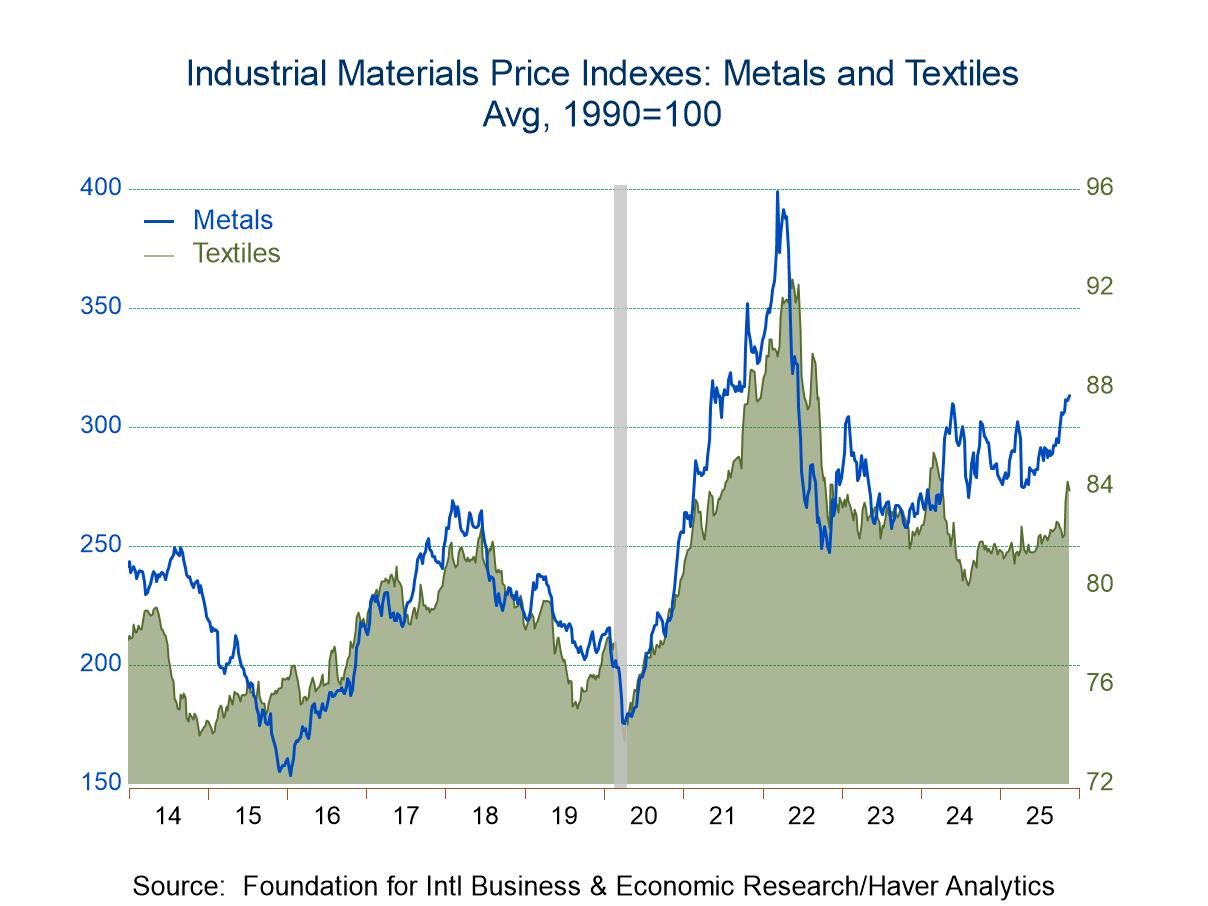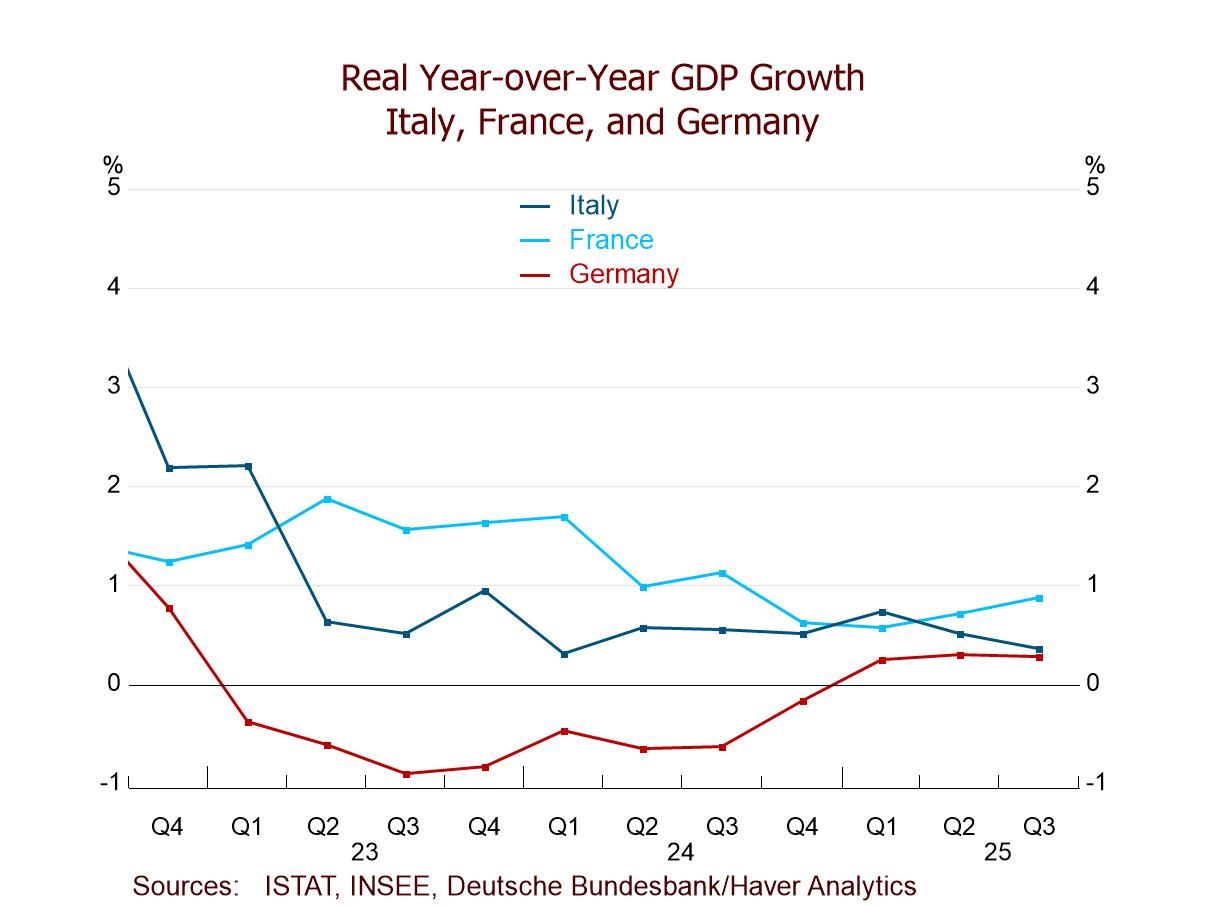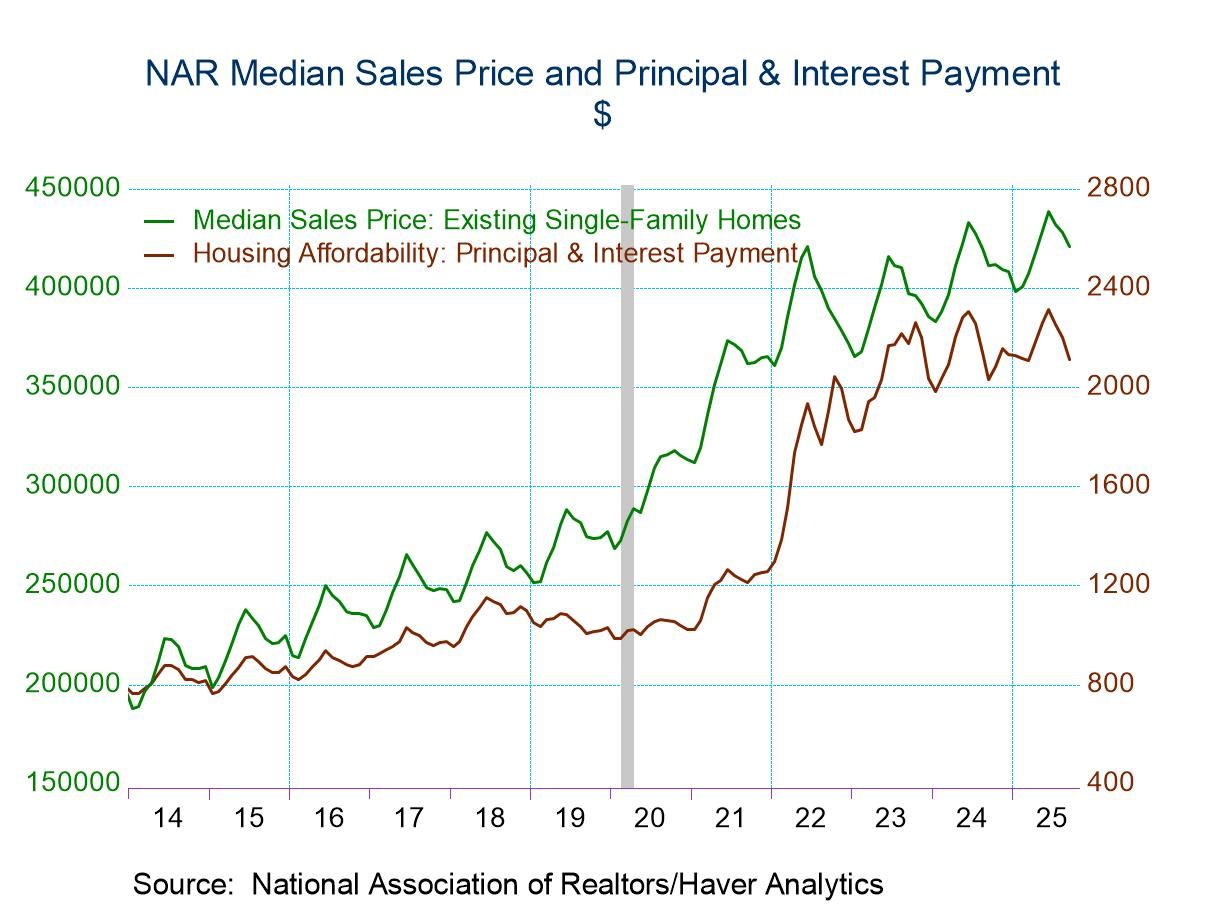NABE Forecasts Negligible U.S. Economic Growth
by:Tom Moeller
|in:Economy in Brief
Summary
- Growth expectations are little-changed amongst all categories.
- Housing starts are predicted to hold steady then fall next year.
- Vehicle sales should fall this year then rise in 2023.
- Price inflation and interest rate estimates are raised.


The National Association for Business Economics forecast for real GDP growth of 0.3% (Q4/Q4) compares to 0.1% estimated in October. For 2023, expected growth was reduced to 0.3% from 1.1%. Quarterly, GDP is expected to rise 0.8% in Q4'22 then be unchanged in Q1'23, ease 0.1% in Q2 and increase 0.7% in Q3.
Personal consumption expenditures are forecast to grow 2.7% this year, revised from 2.4%. Expected growth next year was reduced to 1.1% from 1.3%. Business fixed investment is expected to rise 3.5% this year, revised from 4.3% while the expected 2023 rise was reduced to 0.6% from 2.0%. An expected decline in residential investment this year of 10.0% compares the earlier expectation for a 7.7% drop. An 11.7% 2023 decline was revised from -6.3%. Government spending is now expected to decline 0.9% this year, revised from -1.5% then to rise 1.4% in 2023, revised from 0.8%.
The net export deficit is expected to deepen to a record in $1.364 trillion in 2022, then marginally narrow in 2023. Exports should rise 7.5%, revised from 6.5%, in 2022. Growth in 2023 should be 2.9%, revised from 3.7%. Import growth should ease to 8.5% this year, revised from 9.0%, then slow to a little-changed 0.6% next year. Inventories are expected to rise $109 billion in 2022 from a lessened $34 billion in 2023.
Housing starts are forecasted to hold fairly steady this year at a little-revised 1.55 million units, then fall to 1.32 million, revised from 1.42 million in 2023. Light vehicle sales are projected to fall to 13.9 million, revised from 14.0 million, then rise to 14.7 million in 2023, revised from 15.0 million. Sales will remain below the 2016 peak of 17.5 million. An average monthly gain in payroll employment of 370,000 this year was revised up from 348,000 expected earlier, while next year's expected increase was revised to 43,000 from 80,000. Expectations for the unemployment rate place were unchanged for 3.7% this year and it should rise to 4.3% in 2023, revised from 4.0% projected in October.


Inflation pressures should strengthen. The Consumer Price Index is projected to rise 7.5% (Q4/Q4) this year, revised from 7.2%, then rise 3.1% in 2023, revised from 2.7%. Price inflation year, as measured by the PCE price index, is expected to surge to a little-changed 5.7%, then slow to an unchanged 2.7% in 2023. The chain PCE price index excluding food & energy should rise 4.8% this year, revised from 4.4% expected previously, then slow to 3.0% in 2023, revised from 2.7% expected earlier. The cost of crude oil is expected to average a little-revised $90 at the end of this year, from a lessened $80 per barrel at the end of 2023.
Interest rates are expected to rise more than anticipated earlier. The forecasted 4.00% rate on a ten-year Treasury note at the end of this year compares to the October forecast of 3.53%. The 3.80% rate at the end of 2023 compares to 3.45% expected in October. The Federal funds rate is projected to rise to 4.38% at the end of 2022 compared to the October expectation of 3.88%. The projected rate at the end of next year of 4.63% compares to 3.88% expected earlier.
After-tax corporate profits should rise a little revised 7.8% this year, then improve 0.8% next year, revised from 0.1%. The expected Federal government budget deficit should fall to $1.375 trillion, revised from $988 billion, then total $1.119 trillion in 2023, revised from $1.084 trillion. The deficit hit a peak of $3.132 trillion in 2020.
The figures from the latest NABE report can be found in Haver's SURVEYS database.


Tom Moeller
AuthorMore in Author Profile »Prior to joining Haver Analytics in 2000, Mr. Moeller worked as the Economist at Chancellor Capital Management from 1985 to 1999. There, he developed comprehensive economic forecasts and interpreted economic data for equity and fixed income portfolio managers. Also at Chancellor, Mr. Moeller worked as an equity analyst and was responsible for researching and rating companies in the economically sensitive automobile and housing industries for investment in Chancellor’s equity portfolio. Prior to joining Chancellor, Mr. Moeller was an Economist at Citibank from 1979 to 1984. He also analyzed pricing behavior in the metals industry for the Council on Wage and Price Stability in Washington, D.C. In 1999, Mr. Moeller received the award for most accurate forecast from the Forecasters' Club of New York. From 1990 to 1992 he was President of the New York Association for Business Economists. Mr. Moeller earned an M.B.A. in Finance from Fordham University, where he graduated in 1987. He holds a Bachelor of Arts in Economics from George Washington University.






 Global
Global